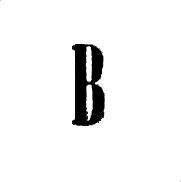Stamp: Revenue stamp (overprinted) (Nicaragua, Zelaya 1912)
Revenue stamp (overprinted) (Nicaragua, Zelaya 1912)
01 January (Nicaragua, Zelaya ) within release Fiscal stamp - overprinted goes into circulation Stamp Revenue stamp (overprinted) face value 15 Nicaraguan centavo
| Stamp Revenue stamp (overprinted) in catalogues | |
|---|---|
| Yvert et Tellier: | Yt: NI-BL TE34 |
Stamp is square format.
10c fiscal stamp of 1912 surcharged "Telégrafos / 15 cts. / 1912" in black, additionally overprinted "B" Hiscocks: 33Also in the issue Fiscal stamp - overprinted:
- Stamp - Revenue stamp (overprinted) face value 15;
- Stamp - Revenue stamp (Surcharged for Telegraphs) face value 10;
- Stamp - Revenue stamp (Surcharged for Telegraphs) face value 10;
- Stamp - Revenue stamp (Surcharged for Telegraphs) face value 10;
- Stamp - Revenue stamp (Surcharged for Telegraphs) face value 15;
- Stamp - Revenue stamp (Surcharged for Telegraphs) face value 15;
Stamp Revenue stamp (overprinted) it reflects the thematic directions:
A coat of arms is an heraldic visual design on an escutcheon (i.e. shield), surcoat, or tabard. The coat of arms on an escutcheon forms the central element of the full heraldic achievement which in its whole consists of shield, supporters, crest, and motto. A coat of arms is traditionally unique to an individual person, family (except in the United Kingdom), state, organisation or corporation.
Telegraphy is the long-distance transmission of messages where the sender uses symbolic codes, known to the recipient, rather than a physical exchange of an object bearing the message. Thus flag semaphore is a method of telegraphy, whereas pigeon post is not. Ancient signalling systems, although sometimes quite extensive and sophisticated as in China, were generally not capable of transmitting arbitrary text messages. Possible messages were fixed and predetermined, so such systems are thus not true telegraphs.


